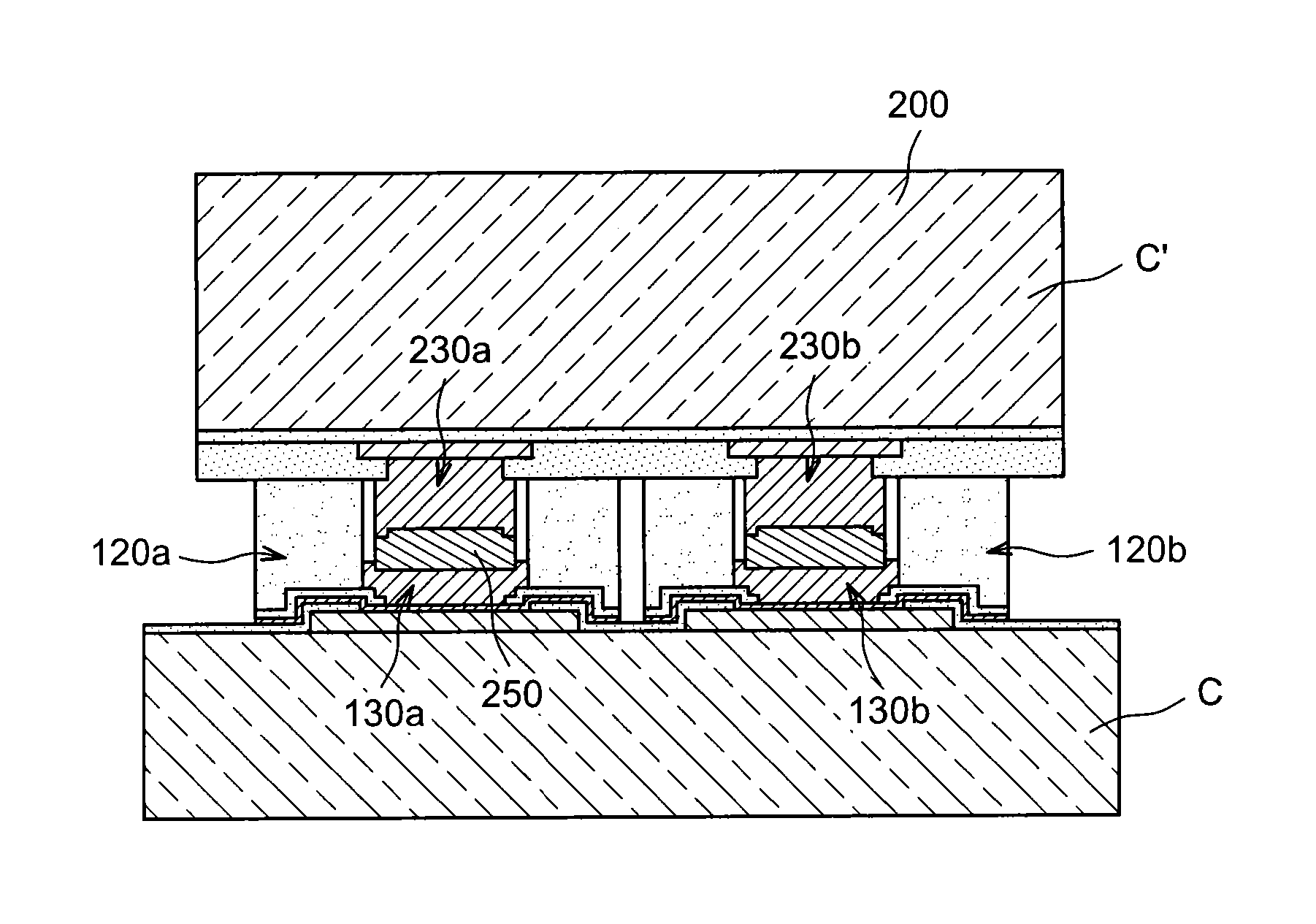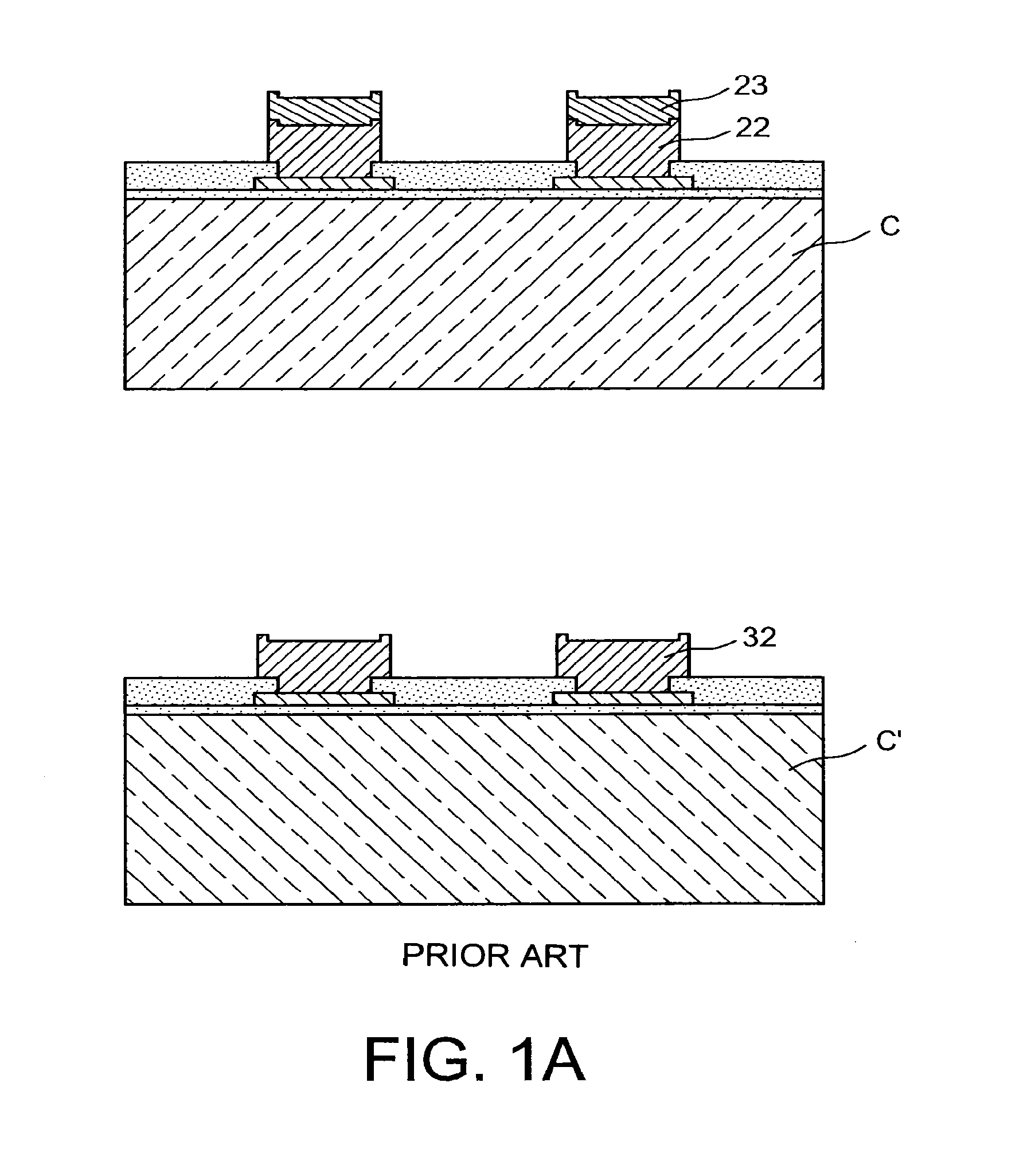Method for producing a structure for microelectronic device assembly
a technology of microelectronic devices and assembly methods, applied in the direction of semiconductor/solid-state device details, printed circuit manufacturing, printed element electric connection formation, etc., can solve the problems of affecting the alignment of components relative to each other, and the method does not lend itself well to the assembling of chips or components having extensive interconnect density
- Summary
- Abstract
- Description
- Claims
- Application Information
AI Technical Summary
Benefits of technology
Problems solved by technology
Method used
Image
Examples
Embodiment Construction
[0017]The present invention firstly concerns a method for forming a first microelectronic device to be assembled with a second microelectronic device.
[0018]This method comprises the steps of:
[0019]a) forming, on the first microelectronic device, a stack comprising a conductive layer applied over a top surface of a conductive pad, and a protective dielectric layer comprising at least one opening called > facing the said pad and exposing the said conductive layer;
[0020]b) forming an insulating block on a peripheral region above the top surface of the said conductive pad, the said insulating block being obtained with a cross-section forming a closed contour and comprising an opening called > located in the centre of the said insulating lock and exposing the first opening;
[0021]c) forming a conductive pillar in said at least one first opening and second opening via growth from the said conductive layer.
[0022]The height of the conductive pillar and the height of the said insulating block...
PUM
 Login to View More
Login to View More Abstract
Description
Claims
Application Information
 Login to View More
Login to View More - R&D
- Intellectual Property
- Life Sciences
- Materials
- Tech Scout
- Unparalleled Data Quality
- Higher Quality Content
- 60% Fewer Hallucinations
Browse by: Latest US Patents, China's latest patents, Technical Efficacy Thesaurus, Application Domain, Technology Topic, Popular Technical Reports.
© 2025 PatSnap. All rights reserved.Legal|Privacy policy|Modern Slavery Act Transparency Statement|Sitemap|About US| Contact US: help@patsnap.com



